Exploring and identifying shapes is an important learning experience for preschoolers. Shapes are all around us and understanding them makes children make sense of the world. By learning shapes, kids develop their memory, visual recognition, spatial awareness and problem-solving. They should learn to identify basic shapes and recognize them in everyday objects from an early age.

Creative Shape Activities for Preschool
There are many shape activities for preschool that you could engage in with your children to enhance their creativity and imagination. Young kids can explore shapes by building with blocks, sorting objects and playing shape-related games. Teaching shapes is a great way to learn new vocabulary and develop early math skills while having fun. Below are three of my favorite shape activities that I have used in my classroom. I love to watch as the children’s understanding grows while setting a strong foundation for future learning.

1. Play Dough Shape Activities for Preschool
Prepare different colored play dough and some pictures or real shapes. Go through their characteristics by introducing words like corners and edges. Let the children explore shapes and play with them for a few minutes.
Then, ask the children to warm up the play dough and open and close their hands. Teach shapes by showing them how to make different shapes using the play dough. Can they make the basic shapes of a circle, square or triangle?

2. Shape Collage Creation
For this activity, you will need:
An A3 sheet for each child, colored cards, scissors and gluesticks.
Begin by introducing the concept of collage to the children. Explain that a collage is a piece of art created by putting different materials together, even if they overlap. Show them an example you created, and go through all the shapes you have already cut out.
If the children are older, they can draw and cut the shapes themselves.
Can they pick out a square? Can they find a yellow triangle? Go through all the names of the shapes you will work with.
After all the shapes have been cut out, model how to stick the shapes on the paper to create a collage.
Allow children to display their collages and talk about them.

3. Shape Printing
You will need:
Sponges or foam cut in different shapes, poster paint and sheets of paper or card.
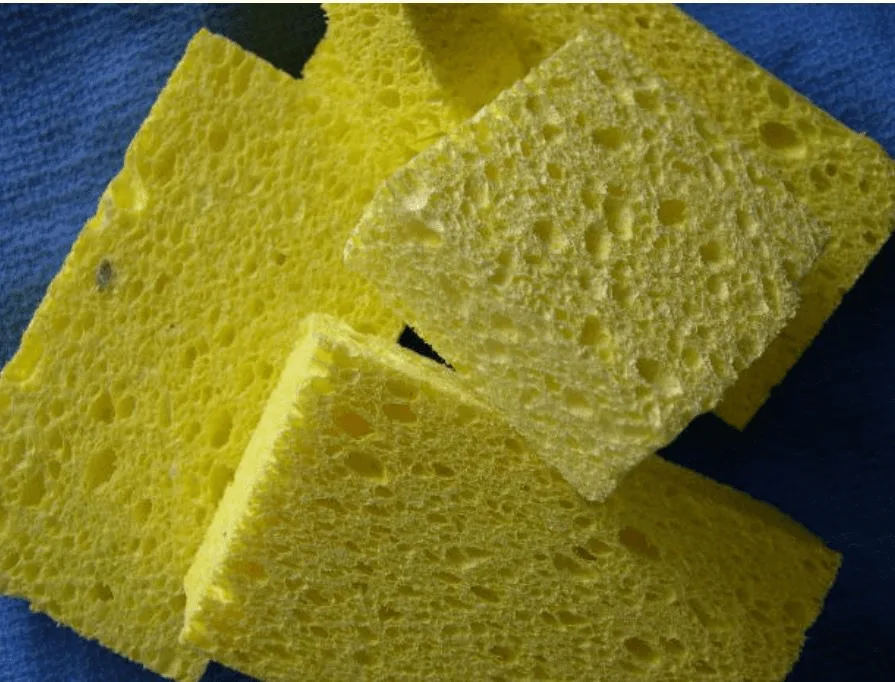
Shape printing is a very fun way to teach shapes! First, explain to the children that they will be doing a fun geometry activity where they will be using shapes as stamps to create unique patterns and designs.
Engage them in a discussion about the shapes made from sponges or foams and see if they can recognize them. Change the colored paint you will be working with, too. Can children name all the colors? Do they know which colors can be mixed to obtain a different color?
Model how to dip the sponges in the paint and ensure they are evenly coated. Encourage children to experiment with different combinations of shapes, colors, textures and arrangements to express their creativity.
Can they create patterns?
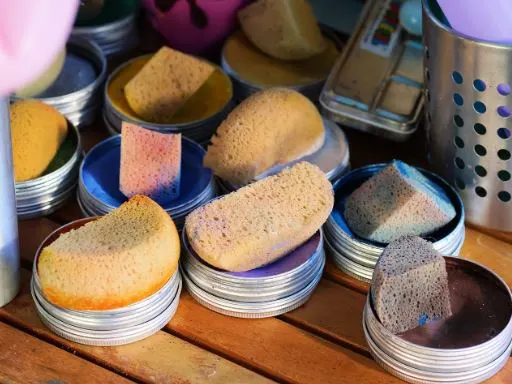
After the activity, open a class discussion on their creations and ask them about their favorite prints.
You can even create a collaborative shape print mural by sticking all the pieces of paper together.
4. Shape Block Towers
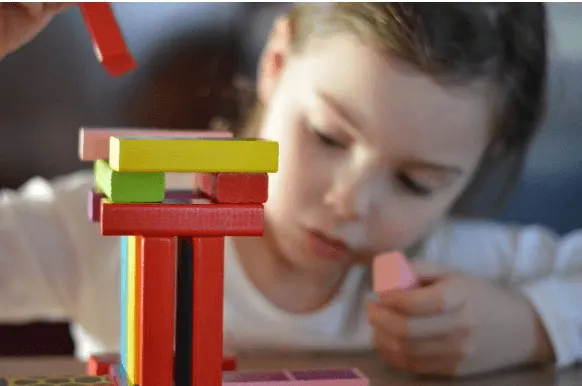
For this shape activity you will need:
Building blocks in different shapes, sizes, and colors. Cuisenaire rods work fine, too.
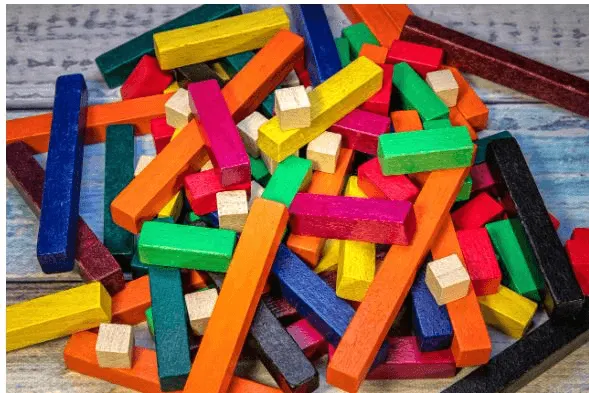
For older children, include shapes such as cubes, rectangular prisms, cylinders, and pyramids. Begin by explaining that they will be using different shapes of blocks to build towers.
Engage the students in a discussion about the different shapes of blocks. Show examples and let your little learners identify shapes.
Then model how to build a tower by using the shapes at hand.
Mix things up. Challenge some children by allowing them to use a certain number of blocks, include specific shapes, or build the tallest tower they can.
Can children use different combinations of shapes, create patterns, or alternate colors? Encourage discussion.
Once the towers are built, talk about the children’s creations. Ask questions, such as which shapes were the easiest or most challenging to work with, and what they learned from the activity.
As a plenary, ask children to describe their towers in the classroom. Expand on their imagination by asking them questions such as: ‘Who lives in your tower?’, ‘How many rooms does it have?’, ‘What is there around your tower?’
Problem-Solving with Shapes
Problem-solving with shapes in the classroom offers students an opportunity to develop critical thinking skills while learning shapes and exploring geometric concepts.
Here are some of my favorite shape activities I have used in my classroom:
5. Shape Puzzle Challenge
You will need different shape puzzles. Explain that they will have to fit different shapes in the correct gaps.
Gather age-appropriate puzzle pieces in various shapes and different puzzle boards. Discuss each shape, and talk about how they can fit together with another shape, or which gap they correspond to.
A tangram is a great resource to use, like in the picture below:
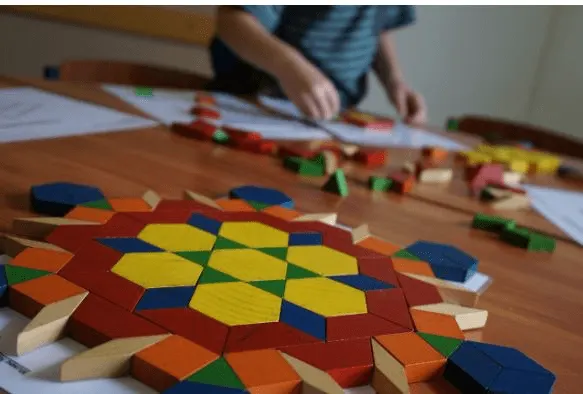
For older children, introduce pentagons, hexagons and octagons.
Show the children how to fit the pieces together on the puzzle board. Distribute the puzzle pieces to the children or allow them to take turns selecting pieces. Encourage them to work together, guiding them as needed to fit the pieces together correctly.
Let the children explore the puzzles individually or in pairs. Observe and provide support as necessary.
As a plenary, ask children which shapes were the easiest or most challenging to piece together. Why?
This shape activity is great to develop fine motor skills.
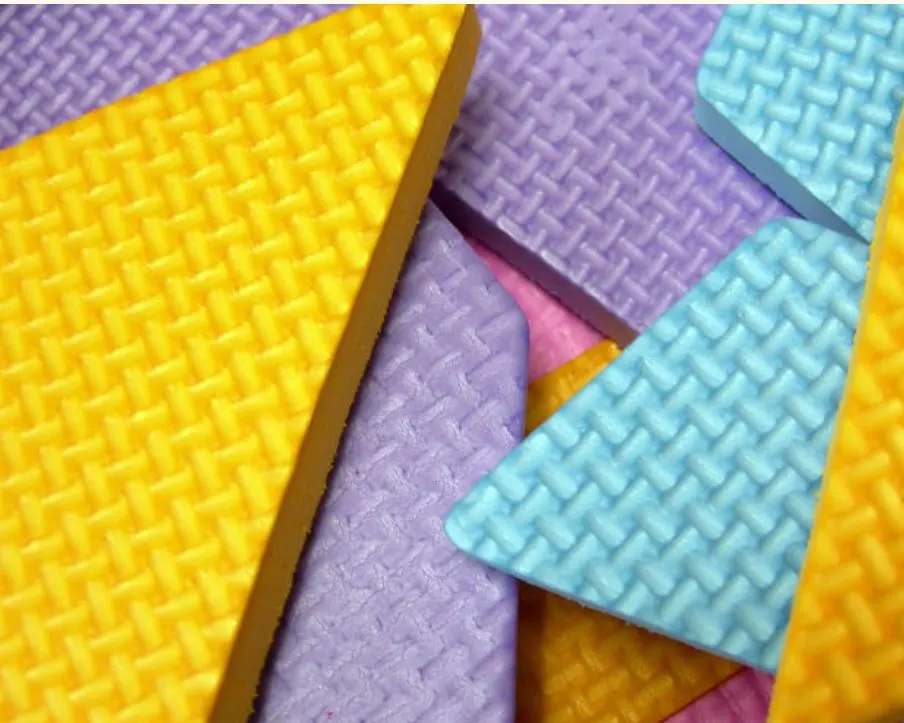
6. Shape Memory Game
Learning shapes can be enjoyable and engaging with the right activity, such as this fun shapes game.
You will need:
Cards that have different shapes printed on them. You can make the cards yourself, or find them online and print them.
How to play this shape activity:
Start by placing the cards face down in a grid formation. Start with only 4 cards first, especially if the children are very young, then gradually increase to six or even eight.
The first player flips over two cards, trying to find a matching pair of shapes. If successful, they keep the cards and take another turn. If not, they flip the cards back over, and it becomes the next player’s turn.
The game continues until all the matches are found. The player with the most pairs at the end wins. This game enhances memory skills, shape recognition, concentration, and fine motor skills.
It can be adapted for different levels by adjusting the number of cards or introducing more complex shapes.
7. Shape Sorting Bonanza
This is one of the most fun shape activities for preschool that I recommend you try with your young kids or students.
You will need:
Different shapes that are made from different materials eg. wood, plastic or card.
To play a shape-sorting bonanza game with preschool kids, gather a variety of objects or flashcards representing different shapes.

Explain that they will have to sort the shapes according to different criteria, for example by color, material, shape, roughness, thickness, etc.
Make a list of all the different sorting criteria they could use. Then model the first example yourself.
After, spread the shapes on a table or play area. Guide the children to sort the objects into corresponding shape categories, placing circles with circles, squares with squares, and so on.
As a challenge and a creative twist for more able or older children, can they find shapes in their environment such as a round clock or a square pencil/case or a rectangular sharpener or eraser?
Ask them to gather all the shapes they can see around them and sort them into different categories.
8. Shape Jumping
You will need:
Masking tape and a clear portion of the floor.
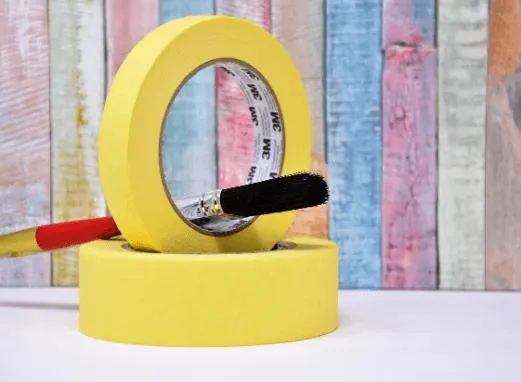
Make big shapes on the floor using masking tape. The children will be asked to jump from one shape to another one by one. Ensure you are teaching shapes by going through each one and making sure the children know the names.
Then ask the children to make a line and tell them which shape to jump on until they get to the other side. Alternatively, ask them to walk around the sides of a particular shape (on the masking tape) and ask them to count how many sides it has. Can they count the corners?
Learning Through Play
Children always learn best through play, and exploring shapes is no exception. When children manipulate shape puzzles, build with blocks, or create shape collages, they develop spatial awareness, problem-solving skills, and fine motor control. Playful shape activities encourage them to explore the attributes of shapes, compare and classify them, and understand their real-world applications. So let them learn shapes through play! Try these shape activities for preschoolers below:
9. Shape Sensory Bin
Sensory bins are amazing for preschool children. They usually can’t get enough!
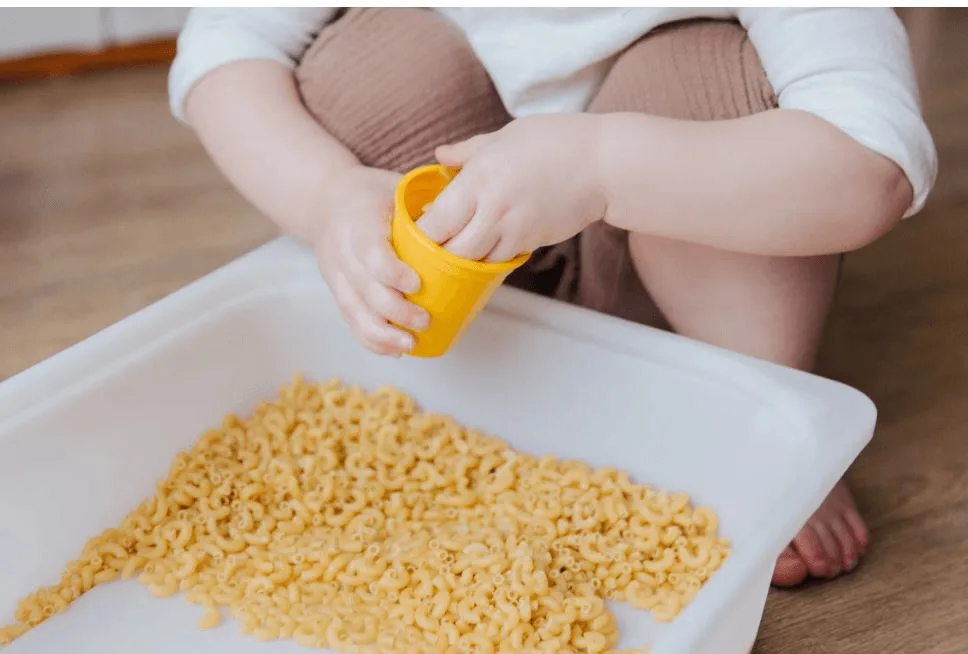
Set-Up
Prepare a sensory bin by filling it with a base material like colored rice, sensory beads or pasta.
Add a variety of objects and materials that represent different shapes, such as foam or wooden shapes, plastic shape molds, or shape-themed toys. Introduce the shape sensory bin to the children, explaining that they will be exploring shapes through sensory play.
Sensory Exploration
Encourage the children to use their hands to feel and manipulate the shapes in the bin.
Let them sort the shapes, identify and name them, and describe their characteristics (e.g. sides, corners).
Shape Search
Hide specific shapes within the sensory bin.
Guide the children to search for and identify the hidden shapes.
Shape Play
Encourage imaginative play by letting the children create scenes or stories using the shape objects in the sensory bin.
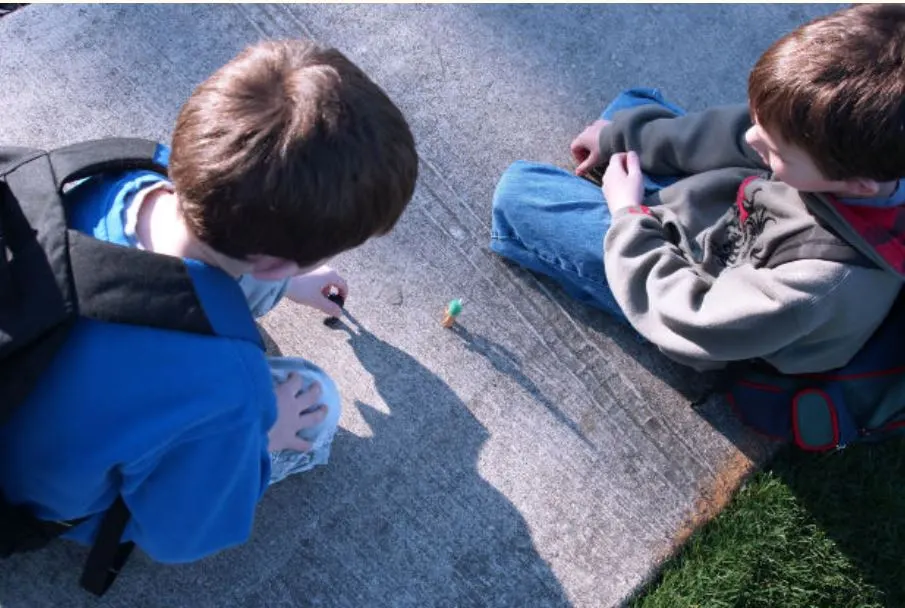
Teach children the habit of tidying up the shape objects and returning them to the sensory bin.
10. Shape Scavenger Hunt
Begin by explaining the concept of a shape scavenger hunt to the children. Give them each a list of shapes to find and define the boundaries, whether it’s the walls of the classroom, the library or the garden. Explain that when they find a shape on their list, they have to bring it back to you, or collect it in a container.
Divide the children into small teams or pairs, ensuring each group has a list of shapes to find. Encourage the children to search the designated area for objects that match the shapes on their list.

Have each team share their findings and discuss the shapes they found. Celebrate their accomplishments and reinforce their shape recognition skills.
As an extra treat, offer small prizes or certificates to encourage engagement and participation.
11. Shape Detectives (I-spy)
Children have to spot the shapes which are mixed in with many different other objects.
Tell the children they do not move around the room. Put many small toys and objects in front of them. Tell them that they have to spot the shapes and take turns to pick them out of the pile of toys. They have to name the shape, pick it up and say its color and properties.
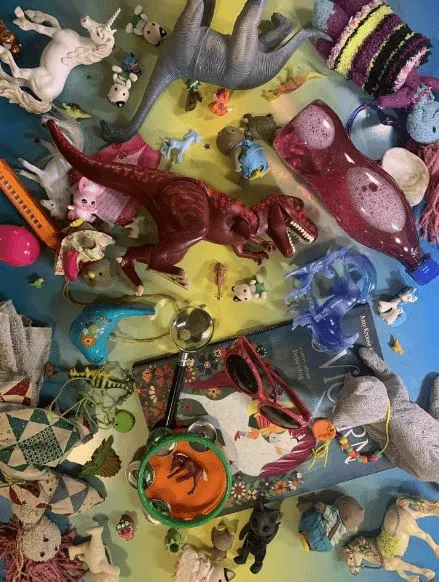
This can be a timed activity, as children have to give their maximum focus for a limited time period.
12. Shape Hunt in Nature
Shape Hunt is similar to the scavenger hunt, but the twist is the location. Ask children to find the shapes you have previously hidden in a forest, park, or school playground.
Make the boundaries very clear, and ask the children to collect the shapes they find.
Come together at the end to talk about the shapes they have found.
Conclusion

In conclusion, engaging preschool children in shapes activities offers a multitude of benefits. These activities promote shape recognition, spatial awareness, fine motor skills, creativity, and cognitive development. By incorporating playful and hands-on experiences, we can nurture their curiosity, ignite their imagination, and lay a strong foundation for their ongoing learning journey.
